
There are many methods to achieve the standardization of quality and the reduction of dependency on individuals in companies, one of which is the use of manuals.
Recently, especially due to the impact of remote work and work style reforms, the importance of manuals within companies has been increasing. However, many may be struggling with the following issues regarding manual creation.
"I understand the importance of manuals, but I don't know where to start."
"I tried creating a manual before, but I couldn't organize it well and ended up stopping halfway through."
"I created a manual, but it wasn't used, and the information became outdated and was no longer utilized."
In this article, we will introduce how to create a manual that does not fail.
We will explain the key points to avoid failure, tips for creating the manual, the steps for manual creation, and points for operation to ensure the manual is effectively utilized.
In today's diverse work environment, talent is fluid. Having manuals in such times can help standardize work quality and reduce training costs.
- Table of Contents
1. What is a manual in the first place? What is it created for?

Before sharing the key points for creating manuals that do not fail, I will first explain what a manual is and why it is created.
・What is a manual?
A manual can be expressed as "guide," "instruction manual," or "procedure document." It is a document that summarizes the methods, procedures, and points of caution for conducting business or tasks. Additionally, manuals can be used to compile knowledge and know-how within an organization for information sharing among employees.
When explaining business procedures, it is often referred to as "business procedure document" or "business guide," while when explaining how to use systems or software, it is commonly called "instruction manual" or "operation manual."
・What is the difference between a manual and a procedure document?
A manual is a document that comprehensively explains the content related to business or operations. It describes not only procedures and methods of operation but also provides an overview of the business, important notes, and troubleshooting as needed.
On the other hand, a procedure document is a document that explains specific tasks or operations in a concrete and detailed manner.
While a manual promotes an overall understanding that includes background and context, a procedure document explains the steps to perform actual tasks or operations accurately and efficiently.
Procedure documents are often provided as part of a manual.
- Purpose of the Manual
The purpose of the manual within the company is to standardize operations, that is, to raise the quality of work to a certain level and maintain that state. Let's take a look at the specific purposes of the manual.
1. Standardization of Operations
In addition to standardizing operations, manuals have various benefits.
Reduce training costs
Having a manual that explains the business can reduce training costs. For example, it takes a lot of effort to teach new employees verbally from scratch. By having them read the manual in advance, it eliminates the need to teach everything from one to ten.
③Prevention of Business Personalization
The manual plays a role in preventing the personalization of work by helping many people understand the procedures and points of caution in the business. Jobs that can only be performed by specific individuals pose a risk to companies from the perspective of business continuity. To mitigate such risks, it is important to standardize operations through manuals.
④Understanding the Overall Picture of Operations
By reviewing the manual, you can grasp the overall picture of the business. Even new employees who lack familiarity with the operations can gain a certain understanding of the business by reading the manual. Additionally, compiling the entire business into a manual can serve as an opportunity to reassess the business content. By systematizing the overall flow of operations and sharing it with stakeholders, each role becomes visible. As a result, it becomes possible to identify areas where work volume is concentrated in a single flow or where there are unnecessary flows, leading to increased efficiency in operations.
Enhancing Productivity in Telework
Key Points for Manual Creation and Business Improvement
This document clearly explains the key points of manual creation.

2. Manual Creation Procedure

Having introduced the purpose and benefits of the manual, we will now present the steps for creating the manual. The general steps are as follows.
① Determine the users and purpose of the manual
② Organize the information to be included in the manual
③ Create the structure and headings of the manual
④ Create the manual
⑤ Distribute and update the manual
1. Determine the users and purpose of the manual
As the first step, determine the users and purpose of the manual.
Let's clarify the role and purpose of this manual, such as "for what purpose" and "for whom."
② Organize the information to be included in the manual
As the next step, we will organize the information to be included in the manual.
Let's review the business content and work procedures, and thoroughly identify any important points and precautions related to the work.
3. Create the structure and headings of the manual
The third step is to create the structure and headings of the manual. It involves considering what to include, in what units and order, and what titles to assign, resulting in a draft table of contents. It is not an exaggeration to say that the success of the manual depends on its structure and headings. The structure and headings (table of contents) can make it easier or harder to find the information you are looking for.
4. Manual Creation
Once you have created the structure and headings, the fourth step is to create the manual. Here are three points to make the manual easy to understand.
The first point is to utilize images, photos, and videos. A picture is worth a thousand words! Let's actively use images and tables to ensure that anyone can easily understand the content.
The second point is to describe the purpose and reasons for the tasks. While the purpose may be clear to experienced users, it may not be the same for beginners. Additionally, writing down the reasons for performing the tasks deepens the understanding of the business content.
The third point is to make it easy to search for where information is located. By including keywords in the headings and text, even someone seeing the manual for the first time can quickly find the necessary information. Including keywords can improve the ease of finding information.
After considering the above points and creating the manual, read through it from start to finish to check for accuracy. You may also want to try performing the actual tasks while reading the manual, imagining yourself as the user. When creating the manual, it is easy to focus on writing explanations and overlook unexpected points. It is important to step away from the creator's perspective and check for any omissions in the explanations, errors, or ambiguous expressions. It is a painstaking task, but by repeating this process, we can enhance the quality of the manual.
5. Distribution and Update of Manuals
As the final step, we will distribute the completed manual.
If there are any feedback from the field or updates to the work content, let's update the manual. Additionally, the manual is valuable when the information is up to date.
Related Blog Posts
6 Key Points for Creating Business ManualsLearn from Other Companies' Examples
How to Create Manuals
We are introducing case studies of companies that have worked on manual creation. Please make use of them.
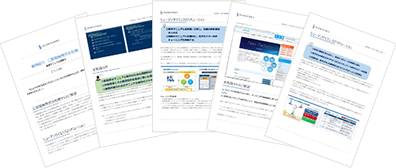
3. Key Points for Creating Manuals Without Fail!

In this chapter, we will introduce common mistakes in manual creation and key points for creating manuals that avoid these mistakes.
Example of Failure 1: Difficult to Read and Understand Manual
The first example of failure is a manual that is difficult to read and understand. Manuals with typos and poorly written sentences are less trustworthy and will not be read. Additionally, manuals that lack a consistent layout and are densely packed with text will also not be read. Without accuracy and immediate clarity, people will stop utilizing the manual.
Point 1 to Avoid Failure: Easy-to-Read and Understandable Manuals
There are three points to make a manual easy to read.
The first is to use templates. The advantage of templates is that the design and format of the text are already organized. By simply writing the text according to the template, you can efficiently create easy-to-read content.
The second is to use bullet points and subheadings. Bullet points and subheadings are concise summaries of the information you want to convey to the reader. By using bullet points and subheadings, readers can quickly understand the content.
The third is to be careful of typos and errors. This is fundamental, but if there are typos or errors, it lowers credibility and the manual will not be utilized.
Example of Failure ②: A manual where it is unclear where and what is written
The second example of failure is a manual where it is unclear where anything is written. A manual serves the role of providing solutions when problems arise. However, what happens if it is difficult to find solutions when you are in trouble? The manual will no longer be relied upon, and people will not feel the need for the manual.
Point to Avoid Failure ②: Create Clear Table of Contents and Headings
When searching for the desired page, many people look for their target page in the table of contents. Therefore, it is important to pay attention to how the table of contents and headings are structured. Consider creating a table of contents by purpose, a table of contents by function, and placing items that users may refer to when in trouble, keeping in mind what users are looking for when creating the table of contents and headings.
Example of Failure ③: Business manuals are scattered within the company
The third failure example is that the business manuals are scattered. When multiple manuals are located in various places, it becomes unclear which manual to refer to. Additionally, there is the disadvantage of taking time to search for information.
If the management and operational system is not established, manuals will end up being scattered within the company. When the management methods differ by person or department, there may be omissions in updating manuals or failures to revise old manuals.
When the management methods differ by person or department, there may be omissions in updating manuals or failures to revise old manuals.
Point 3 to Avoid Failure: Standardize Management and Operation Methods
The reason manuals are scattered within the company, as mentioned earlier, is due to ambiguous management and operational methods. As a countermeasure, it is important to designate a manager and unify the management and operational methods within the company. If management and operations span multiple departments or teams, let's establish rules and guidelines.
Example of Failure ④: Manuals are not updated
The third example of failure is that the business manuals are scattered. When there are multiple manuals in various places, it becomes unclear which manual to refer to. Additionally, there is the disadvantage of taking time to search for information.
If the management and operational system is not established, the manuals will end up being scattered within the company. If the management methods vary by person or department, there may be omissions in updating the manuals or failures in revising old manuals.
Point 4 to Avoid Failure: Establish Rules and Procedures for Updates
The fundamental reason why manuals become outdated is that the update rules and operational methods are not established. First, let's set basic rules such as determining the timing for updates, the person responsible for updates, and the person responsible for checking the update content. Having a designated person to decide whether the manual needs to be updated in the event of changes in operations will lead to smoother operations.
Example of Failure ⑤: Manual creation stalls due to insufficient resources
The fifth example of failure is a lack of resources. Business manuals require more personnel than one might expect. There are many cases where the creation of manuals comes to a standstill due to personnel changes and busy work situations.
Point 5 to Avoid Failure: Work on Creation as a Team or Outsource
One key point to avoid failure is to work on manual creation as a team. If only one or two people are involved, the burden will be too great, and progress will be slow. However, by working as a team, the efficiency of manual creation will significantly increase. Additionally, with more eyes on the project, the manual will become more refined.
Another point is outsourcing. If the manual creation is stalled due to a lack of resources, consider outsourcing as an option.
Example of Failure ⑥: Manual Creation is Delayed
The last example of failure is when the creation of manuals is postponed, resulting in taking longer to complete than expected. This could lead to a situation where the release does not make it in time when the manuals are truly needed.
Point 6 to Avoid Failure: Set a Schedule for Completion in Advance
Before starting the creation process, it is important to establish a schedule leading up to completion. Decide on the desired release date for the manual and work backwards to determine the overall timeline.
For example, if it is a manual for new employees, it needs to be completed by April when the new employees join, so the goal is to finish by mid-March.
Consider how much time is needed for each of the following steps in creating the manual, and determine when to start the manual creation process.
・Scope of the manual (What and how much to teach new employees)
・Format of the manual (File format, design, etc.)
・Content and order of presentation (What kind of table of contents to create and what content to include based on the scope of the manual)
・Collection of materials to be used
・Creation of content
・Confirmation and feedback from stakeholders (Consideration of who to have confirm is also necessary)
・Incorporation of feedback and finalization
In addition to the time required for creation, let's establish a reasonable schedule that takes into account busy periods and strive to proceed according to the schedule. By incorporating busy periods into the schedule in advance, it becomes easier to secure time for manual creation.
5 Key Points for a Good Manual
"Good Manuals" are created by
introducing 5 key points clearly using the
'Sa Shi Su Se So' method.

4. To Create a Useful Manual! Key Points for Manual Operation

Once the manual is completed, it is not the end. It only becomes effective when it is widely used. Therefore, in this chapter, we will also introduce key points for creating manual operation rules.
Point 1: Help stakeholders understand the importance of the manual
Let's ensure that stakeholders understand the importance of manuals for standardizing and streamlining operations. If it is a manual used within a department, explain the purpose and benefits of the manual during meetings.
It is also necessary for the manual creators themselves to recognize its importance.
In one company, the personalization of operations had become a problem. The person in charge, who was instructed by the company to compile their responsibilities into a manual, realized that identifying all aspects of their work, including the finer details, and organizing the information in a way that is easy for other employees to understand, could lead to a review and streamlining of operational procedures. As a result, they were able to share the created manual with a sense of its usefulness in operations.
Point 2: Store in an easily understandable location
Even if you create a comprehensive manual, it won't be read if people don't know where it is stored.
Make sure to store it in a shared folder used by your department or team with a clear name, and when informing others about the manual, always let them know where it is stored.
Point 3: Regularly update and improve
Since the content and approach of our services may change, let's regularly review the manual and update it with the latest information.
There may be questions from users who have utilized the manual, or requests for additional explanations. If necessary, by reflecting user requests and continuing to provide accurate information, we can foster a mindset that "problems can be solved by reading the manual," creating a cycle where the manual is actively used.
Related Blog Posts
What are the management methods to effectively operate manuals?5. Summary
How was it?
This time, we focused on how to create a manual that won't fail. We introduced several examples of failed manuals, but the countermeasures are all quite simple methods.
It is undoubtedly true that manuals are becoming increasingly important in today's society, where work style reforms and remote work are advancing.
That said, while many understand the importance, I believe there are many who feel that creating manuals is difficult.
Especially, creating manuals alongside regular duties can be challenging. Therefore, I recommend outsourcing manual creation. In particular, I suggest entrusting it to professionals who specialize in manual creation.
Among the many manual creation companies, the most recommended is "Human Science." Human Science is a professional in business manual creation with a track record of 215 companies and 2854 manual creation projects. Here are three reasons why we recommend Human Science.
Reason 1: Manual Creation by Expert Consultants
Expert consultants conduct research on the subject of the manual and handle the manual creation process.
Even if there are no existing materials, they will manage everything from interviews to manual creation.
Additionally, expert consultants also work on manual improvements, pursuing the ideal form of the manual.
Reason ②: We provide not only manual creation but also support for implementation
Human Science also focuses on the important phase of "implementation" that follows manual creation. By implementing various measures such as supporting regular updates of manuals and conducting manual creation seminars, we approach the goal of ensuring that manuals are established in the field.
Reason 3: Creation of Video Content
Human Science handles everything from planning video content to filming and content creation. In today's world, where there is a high affinity for video platforms like YouTube, manuals that are not only "read" but also "watched" are effective.

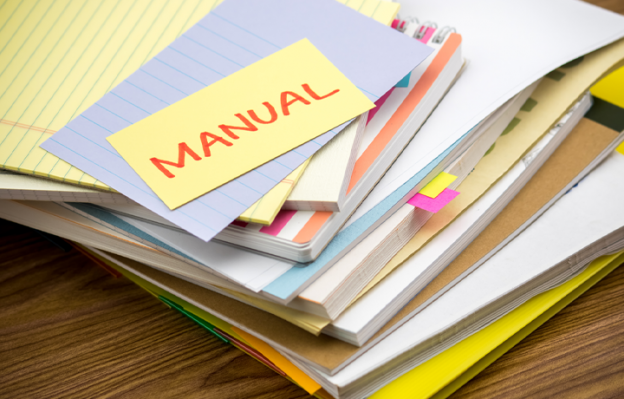
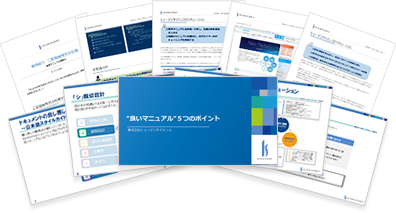














































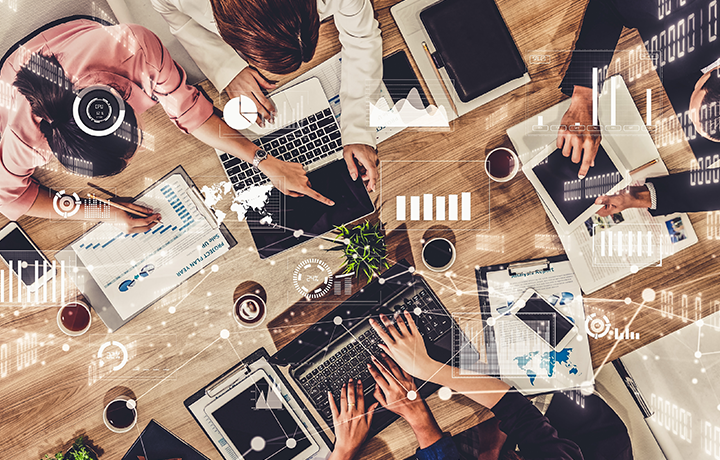
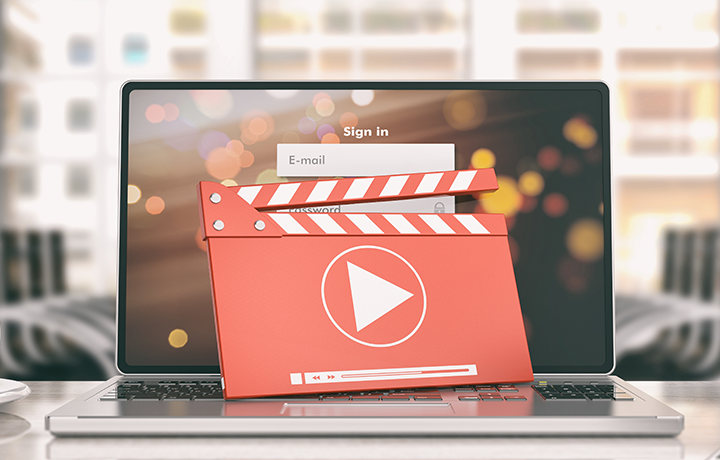















 Manual creation
Manual creation Director, Writer
Director, Writer In-house Support
In-house Support Video
Video Manual
Manual Manual Creation
Manual Creation One-Stop Service for Manual Creation
One-Stop Service for Manual Creation Manuals and Documents
Manuals and Documents


